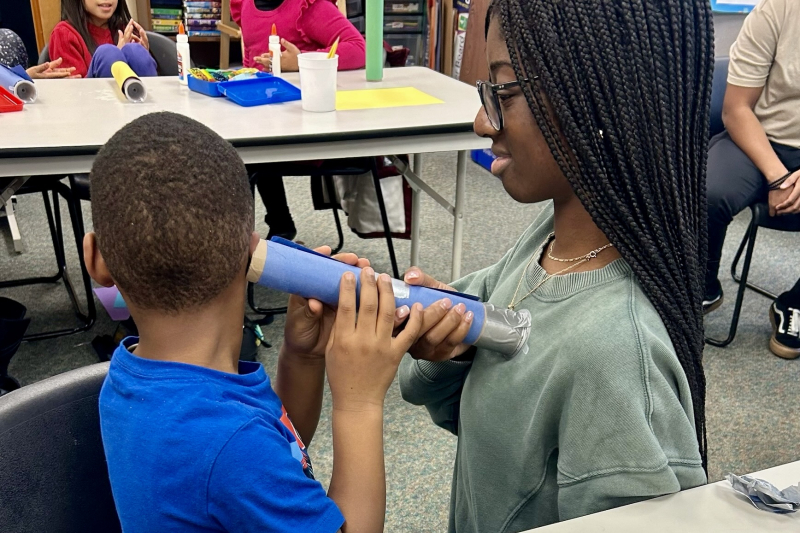
Duke CTSI and the Duke Office of Clinical Research (DOCR) have teamed up with a unique program managed by Duke medical students that encourages Durham teenagers to explore careers in health professions.
This year, an expansion of the Duke Health Professions Recruitment and Exposure Program (HPREP) has also reached children in elementary school, providing engaging after-school activities related to science, technology, engineering, and math, or STEM.
“As a third-year medical student at Duke and co-director for HPREP, I’m grateful for our partnership with CTSI and DOCR,” said Adwoa Baffoe-Bonnie, who leads the program with first-year medical student Muhamed Sanneh. “I also served as co-director in 2024 and a mentor in 2023, so I really believe in the value of HPREP as a pathway program to help build the clinical research and health care workforce.”
The program connects young students with near-peer mentors like Baffoe-Bonnie who model leadership and success in STEM. High school counselors across the Triangle area distribute applications, and medical students from Duke’s chapter of the Student National Medical Association lead the program.
For eight Saturday mornings at the School of Medicine, high school students learn topics such as anesthesia skills, CPR training, and resume writing and hear from clinical research professionals at CTSI. In addition to hands-on activities, students conduct a research project and present their findings at a closing ceremony.
HPREP Junior
Recently, CTSI helped HPREP expand by connecting the program with the West End Community Foundation, a community partner that supports youth in Durham’s West End.
“Foundation Director Dosali Reed-Bandele was interested in after-school activities and mentoring that would get elementary-aged students excited about STEM,” said Amanda McMillan, MPH, MA, co-director for CTSI Workforce Development. “We saw HPREP as an ideal collaborator to bring this mentoring program to life.”
The partnership took off, and the elementary after-school program at the Community Family Life & Recreation Center at Lyon Park now features HPREP Junior. Emily Boone, the education and training coordinator for DOCR and a former elementary school teacher, helps develop engaging lessons.
“Our first session focused on germs — what they are and how they spread. Using a special solution that mimics germs and glows under black light, we gave students a hands-on demonstration,” Boone said. “They applied the gel to their hands, observed the ‘germs’ under black light, then washed with soap and water before checking again. This was a great way to reinforce proper handwashing techniques.”
Students looked at microscopic images of real-life germs and then drew their own interpretations, sparking creativity and engagement.
Focus on the heart, brain
Another session focused on the heart. Students learned about the heart’s structure and function, felt their resting heartbeats, and observed how their heart rate changed after physical activity like dancing.
“They created their own craft stethoscopes and used them to listen to each other’s heartbeats,” Baffoe-Bonnie said. “We brought along our Littmann cardiology stethoscopes, which gave students the chance to compare their handmade versions with professional-grade equipment and experience the real sound of a heartbeat.”
Most recently, students put their minds to work learning about the brain — the structure and function of the cerebrum, cerebellum, and brainstem. They brought their knowledge to life by making models of the brain from crafting dough.
Baffoe-Bonnie said she hopes these collaborations between Duke, Durham Public Schools, and the community will encourage students at every age to eventually consider STEM-related careers, which in turn will create a more representative workforce and health care system. The Student National Medical Association prioritizes exposure and education starting in elementary school, with continued support throughout the trajectory of medical training.